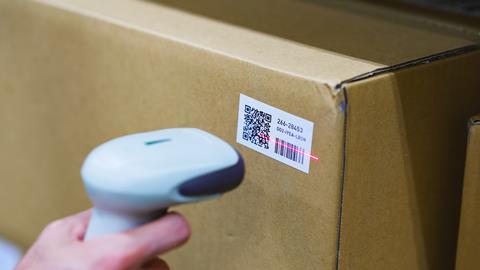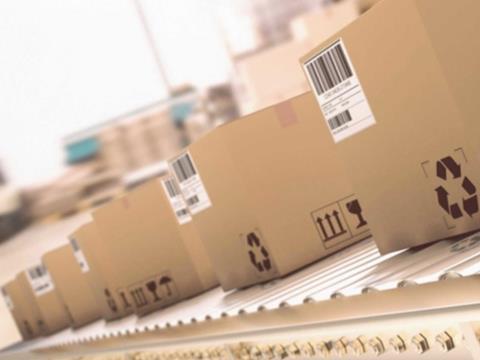
Consumer protection in packaging can range from the physical packaging to the technology used in labelling, affecting consumers of industries including pharmaceuticals, food and beverages. At the start of 2022, Markem-Imaje highlighted the challenges of counterfeiting, particularly around the holiday period.
The article pointed out the dangers of fake items to consumers and brand reputations, stating there is an “urgent need” for digital solutions that “thwart counterfeiters and help maintain consumer trust by allowing for immediate product authentication”, adding brands need to be protected across both online and in person outlets.
It also mentioned the company’s e-Fingerprint product authentication for packaged consumer products, apparently providing each product with a digital identifier which can be scanned via a smartphone app for verification; and for luxury products e-Fingerprint embeds a near-field communication (NFC) tag into each product.
In its Consumer Protection Study 2022, the UK government’s department for business, energy and industrial strategy found that between April 2020 and April 2021, “69% of consumers in the UK experienced consumer detriment”, which for the study is defined as “at least one problem with a product (either a service or an item)” the consumer bought or used in that 12 month period, which “caused them stress, cost them money, or took up their time”.
It’s worth noting the data was gathered during the Covid-19 outbreak, with consumers feeling that 43% of their incidents of detriment “had been affected in some way by the pandemic”, and 56% of the experiences of detriment ended with a positive resolution.
Utilising technology in labelling: Avery Dennison
There are several companies aiming to help brands protect customers through technology. One of these is labelling firm Avery Dennison which uses technology including security labels with tamper evident and anti-counterfeiting solutions and RFID inlays for pharmacies, hospitals and clinics to itemise and sort stock.
Avery Dennison’s atma.io technology was a finalist in our Sustainability Awards 2021, and in September last year Tim Sykes spoke to marketing manager for film solutions Mariya Nedelcheva about the relationship between labelling and recyclability.
We asked Hassan Rmaile, Avery Dennison’s senior vice president and general manager for Europe, the Middle East and North Africa, how to identify counterfeit products and the ways technology and labelling can help protect consumers.
Counterfeit packaging and products can be a concern, particularly in industries such as pharmaceuticals, food, and beverages. How would you identify counterfeit packaging or products?
Counterfeit products in the pharmaceutical industry pose a major threat to patients because there is no way for consumers to spot the difference between real and fake products. In many cases, the packaging is genuine, but the product is counterfeit, putting patients at serious risk. [UCONN says that] according to the World Health Organization about 11% of medications sold in developing countries are counterfeit.
The Falsified Medicines Directive sets regulations against counterfeits. This directive requires all packaging of medicinal products to contain a tamper evidence device and a 2D barcode printed on each label. Security labels reduce the risk of packaging falsification and include destructible labels, box damage films, and void labels.
However, we are seeing many shortcomings in the 2D barcodes that RFID [Radio Frequency Identification] can potentially solve. The Drug Supply Chain Security Act (DSCSA), a directive in the US, will mandate an increase in the amount of traceability required in the US through product identifiers. However, this directive does not dictate that this is achieved through a barcode, which means companies can look to enable RFID.
What difference can the information and materials used in labelling make in informing consumers’ choices and safety?
To ensure products are sold in the legitimate market, brands must protect them in multiple ways. Digital ID technology such as RFID inlays can dramatically enhance patient safety, brand protection, inventory management, operational efficiency and regulatory compliance.
This has a positive impact on consumer engagement in the following ways: delivering information such as warnings, contents, expiration dates, and instructions on proper usage and disposal; connecting consumers to extensive information [such as] a product’s origins, contents, uses and environmental impact; and enabling real-time tracking of products so consumers know where their package is and delivery issues can be resolved more efficiently, building consumer trust.

How can RFID and UID [Unique Identifier] technology help with consumer safety, and be used in areas such as consumer goods? For pharmaceuticals, how would intelligent packaging impact patient care and stock checks?
RFID inlays provide unique microchips (also known as integrated circuits) to products. Tagging pharmaceuticals or consumer goods with RFID technology enables products with a unique digital ID and a “digital twin” that can be tracked and traced online via inventory management applications or other software, providing improved visibility into supply chains and inventories by enabling users to track any item, anywhere, and “see” it in real-time.
Regarding patient care, NFC [Near Field Communication] tags can be used to engage consumers directly and provide critical information about their products. For example, if a product is authentic and safe to use. It can also provide complete, secure, and easily accessible proof of a product’s provenance and a map of its entire supply chain journey.
In addition, specially designed RFID inlays can be used for tamper-proofing. The microchip detects any damage to the label, which is then recorded and documented as being tampered with. Intelligent labels can also remind patients to take their medications.
Regarding stock checks, RFID can enable monitoring of expiration dates for medication and supplies, as well as automated alerts about items nearing the end of their shelf lives. They allow retailers to keep track of individual items and efficiently manage their products.
You developed your atma.io cloud technology to connect products through digital IDs, track and store information. How might companies utilise this to protect consumers?
Atma.io connected product cloud assigns unique digital IDs to everyday items, providing end-to-end transparency by tracking, storing and managing all the events associated with each individual product — from source to consumer and beyond to enable circularity.
This technology allows companies to protect their consumers and patients by, for example, making recalls faster and more precise, allowing users to locate and remove affected products immediately. It also enhances consumer engagement and loyalty by providing detailed, clear usage and disposal instructions.
What technology would you like to see implemented in packaging to help protect consumers in the future?
There are many possibilities for adding new functionalities to labels and packaging, e.g. time-temperature sensors, freshness sensors, and packaging that inhibits bacterial growth. Labels and packaging that connect to augmented reality experiences (e.g. demonstrating exactly how to use a product) provide a richer consumer experience that helps to increase brand loyalty.
Above all, we cannot overlook the need for sustainable labelling and packaging that reduces our shared environmental impact and protects our planet.
Serialisation and tracking to help prevent counterfeiting: Covectra
Another company whose solutions could be used to help protect consumers is Covectra, which provides serialisation-based solutions for track and trace as well as aiming to combat drug abuse and counterfeiting. Apparently, the company’s ControlTrack technology monitors drug compliance and adherence blister packaging services, and its StellaGuard smart security label is designed to help with brand protection, as it can be authenticated by the consumer via a mobile device.
In our feature on innovation for consumer protection, Covectra’s Terrence O’Neill touched on the challenge of counterfeit in e-commerce, claiming the solution needs to be “simple for the consumer to use and understand the results,” and have technology in the background that will “effectively raise entry barriers to counterfeiters” such as artificial intelligence.
We spoke to Steve Wood, strategic executive at Covectra, about features of effective counterfeits, serialization and the use of intelligent packaging in the pharmaceutical industry.
Counterfeit packaging and products can be a concern, particularly in industries such as pharmaceuticals, food and beverages. What measures could be taken to effectively combat counterfeiting?
Effective anti-counterfeit features should have the following qualities:
The appearance of the feature should be subtle, and not distract from the appearance of the product or package; if possible, each primary package should be uniquely identifiable by the operator with a minimum of effort; if other equipment is needed to perform the authentication, it should be a device that is owned by almost all owners, such as a smartphone; and serialisation of each primary package should be strongly considered.
If a package is not used on the product, the feature should be easily visible on the physical product.
Are there any specific signs that consumers should look out for?
Some of the more obvious signs in counterfeit packaging include broken seals, missing logos, expiry dates, or important information such as contact information and package inserts. Convenience is the most important feature from a consumer’s standpoint, and by no means should the consumer feel that he is paying a premium for the counterfeit feature.

You launched the AuthentiTrack serialisation database back in 2009 – has this helped with consumer protection over the years, and what are the main developments you’ve noticed?
Yes, considerably. However, serialized codes could be used by counterfeiters on fake products. Therefore, serialized codes can be used by the supply chain, but these should be supplemented by anti-counterfeit features.
More recently, you introduced your ControlTrack solution to monitor medication compliance. How might this help with consumer safety?
One of the features of ControlTrack is that each unit dose is monitored and tracked, enabling it to provide additional safety and security features to ensure that each unit dose is tracked and traced.
The unit dose monitoring is made possible by the packaging of each drug unit dose in a blister pack - the unit doses are individually printed to enable tracking by the patient.
For pharmaceuticals, how would intelligent packaging impact patient care and stock checks?
Given the level of sophistication of drugs available today, and the importance of providing the maximum of security for those drugs, intelligent packaging is very desirable. Serialisation provides the ability for industry players to track products throughout the supply chain.
Additionally, it allows for a supplier to have a granular view of its inventory, precisely to specific salable units. On the other hand, the StellaGuard brand protection feature provides an important layer of protection to ensure product authenticity, along with a clear view of territories where products are transiting, thus enabling brand owners to have control over product diversion and territory ownerships.
Your StellaGuard label technology is designed to provide brand protection. What are the main challenges in this area, and how could companies use this technology to protect consumers?
Having a security feature that is intuitive, non-disruptive and cost-efficient to implement. The brand protection feature should allow the consumer to easily authenticate a product without diverting its attention from the brand itself.
The StellaGuard label combines the serial number and the StellaGuard “stars” to provide a secure package at a reasonable price. Consumers can use the StellaGuard consumer feature to verify the product’s authenticity following simple steps. The brand owner dashboard also provides valuable features including scan touch points with geolocation and consumer engagement opportunities.
If you liked this article, you might also enjoy:
The L’Oréal approach to packaging sustainability
What steps is Apple taking to make its packaging more sustainable?
How did Brazil achieve its 100% aluminium can recycling rate – and can it be replicated in the EU?
Experts have their say on the EU’s Packaging and Packaging Waste Directive revisions




















No comments yet